Universal variety of cucumbers “Real Colonel”, loved by many summer residents
Despite the masculine name, the hybrid True Colonel belongs to plants with a female type of flowering. This means that there are practically no barren flowers on the bushes, which is why they bring a magnificent harvest. The culture is also famous for its fruits with a sugary aftertaste and a complete absence of bitterness.
In pickles and marinades, the hybrid, like a true military one, exhibits enviable endurance, maintaining excellent taste characteristics regardless of shelf life.
Description of the variety
Real Colonel cucumbers belong to the hybrids. Work on it was carried out at the Manul breeding company. The crop is grown in most regions of the country and neighboring countries.
Reference! The breeding company "Manul" has been known on the Russian seed market for more than 20 years. This is one of the largest operating companies for the production and sales of seed material.
Distinctive features
In 2004, the crop was included in the State Register of Breeding Achievements. The main difference from other hybrids is that they belong to the parthenocarpic type, which means that cucumbers do not require pollination. It is convenient to grow such plants in closed structures where bees do not fly.
Reference! For a long time there was an opinion that parthenocarpic vegetables are unsuitable for conservation. Modern selection has refuted this opinion: the parthenocarpic hybrid in pickling is no worse than other varieties.
The photographs show cucumbers Real Colonel f1.
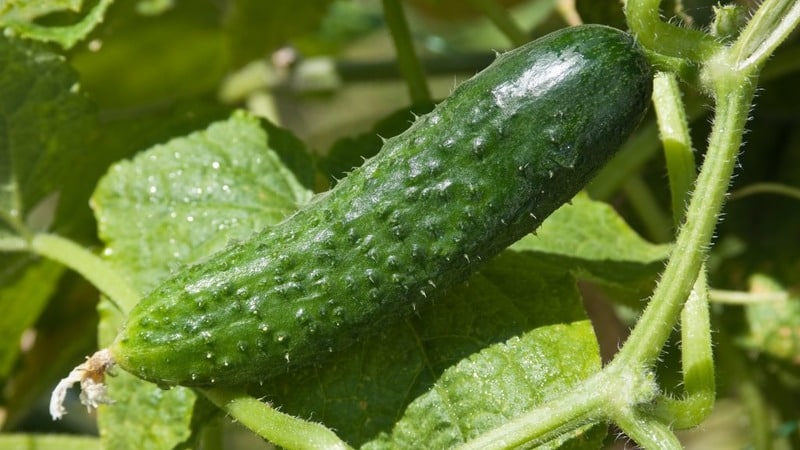
Composition, benefits, calorie content
The beneficial properties of these cucumbers are undeniable. They contain a high content of microelements and vitamins necessary for health. Real Colonel cucumbers are rich in iron, phosphorus, potassium and iodine. They also contain vitamin C, A, B2 and B9.
Due to their low calorie content (12-14 kcal per 100 g), ripe vegetables are successfully used for dietary nutrition. Scientists have proven that cucumber diets contribute not only to weight loss, but also to increased immunity.
This vegetable is also used in cosmetology, and not only at home. Cucumber lotions, masks, creams rejuvenate facial skin, relieve fatigue, and eliminate bags under the eyes. Cosmetics based on cucumber juice deeply cleanses pores and has a slight whitening effect.
Plant characteristics
The type of flowering is female, indeterminate (not limited in growth). The branching is average, the leaves are medium-sized, bright green. Each leaf axil forms 3-4 fruits, the ovaries are formed in bunches. The bush is powerful.
The ripening period is average, from the moment of emergence to harvest, 38-42 days pass. Fruiting lasts for a long time, until frost.
Productivity is high and stable, from 1 sq. m, 10-12 kg of fruits are collected, provided that 3-4 seedlings are placed in open ground, and in a greenhouse - 2-3 seedlings per 1 sq. m. m.
The culture is characterized by increased immunity to diseases such as cladosporiosis, cucumber mosaic virus, root rot and powdery mildew.
The hybrid quickly adapts to temperature changes. Recommended for cultivation in open ground and in protected structures.
Fruit characteristics
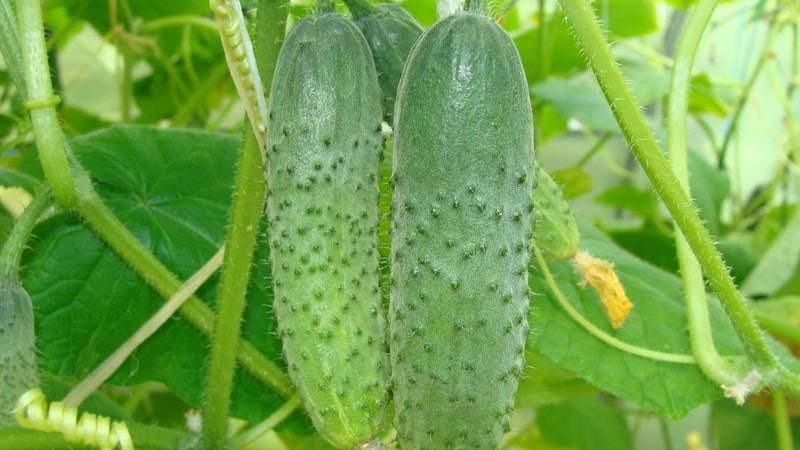
Average weight 100-115 g, length 10-13 cm, cylindrical shape, slightly curved, dense pubescence.The color of the fruit is dark green with faint light stripes. The taste is sweet, without bitterness. The fruits are juicy and crispy.
The use of ripe vegetables is universal, but according to reviews, people like the taste of fresh cucumbers more than pickled ones. Nevertheless, all kinds of pickles and marinades are made from them.
How to grow a hybrid yourself
The hybrid is grown in two ways: seedlings and without seedlings. Versatility in cultivation is an important advantage, especially for residents of the southern regions.
Sowing seeds in the ground
Seeds are placed in previously prepared soil at a temperature of at least 16°C. The soil for sowing is chosen to be light and non-acidic; it is this composition that has a beneficial effect on the growth and development of seedlings. Before sowing, the soil is moistened and fertilized with manure. Real Colonel cucumber seeds are sown in holes to a depth of 2 cm and covered with film.
Advice! For lightness, peat or sand is added to the soil, and the acidity level is determined using litmus paper. When the indicator changes to red, dolomite flour or lime is added to the soil to reduce acidity.
Sowing seeds for seedlings

Seeds for seedlings are sown 25-30 days before planting in the ground. Prepare the soil yourself or purchase it from a specialized store. If you decide to carry out sowing work yourself, be prepared to disinfect the soil.
Hybrid seed can only be purchased in the store, since it is impossible to collect it yourself. Basically, purchased seeds are already ready for sowing; the manufacturer has already carried out calibration and disinfection. But experienced users soak them in growth stimulants to improve germination. Stimulants usually used are Epin or Zircon. Soaking time is 8-10 hours.
Reference! Calibration is a visual selection of seed material by size and density.
The soil is prepared from a mixture of garden soil, peat, humus and river sand in equal quantities. After thorough mixing, the resulting mixture is poured with a hot solution of dark potassium permanganate.
Individual containers for sowing are chosen: peat pots, plastic cups or paper honeycombs. Do not forget that it is difficult for cucumbers to take root after transplantation due to the vulnerable root system - it is advisable to plant cucumbers in containers from which replanting is not required - for example, peat pots.
Drainage holes are made at the bottom of the container to drain excess moisture and filled two-thirds with prepared soil.
Seeds are sown to a depth of 2 cm, 2-3 pieces each. into each container (in case of incomplete germination). After sowing, the top layer of soil is moistened with warm, settled water from a spray bottle and covered with film until shoots appear. The seeded containers are left in a room with a temperature of at least 25°C.
Seedling care
As soon as the seedlings appear, the containers are placed on the windowsill so that the seedlings receive enough light. The room temperature is reduced to 22°C, otherwise excess heat will cause the sprouts to stretch.
Water only with warm, settled water as the top soil layer dries out.. The hybrid seedlings grow amicably, quickly and are strong in appearance, so they are not fed before transplanting into the ground.
Loosening the soil promotes better penetration of oxygen, which further strengthens the immunity of seedlings. But be careful - deep loosening can damage the young roots.
The seedlings are ready for transplanting to a permanent location as soon as 3-4 true leaves are formed on the bushes.
Transplantation into the ground and further development of the hybrid
Planting and care does not involve difficulties and comes down to standard activities. The seedlings are transplanted in the evening into prepared holes. First, the holes are filled one-third with humus and filled with water. They are replanted together with a clod of earth, otherwise the plants will not grow for a long time. After this, the holes are covered with loose soil, lightly watered with warm water and mulched.
Reference! Mulching helps retain moisture and protects the beds from invasion by ground plants. pests. Most often peat or straw is used as mulch.
Water moderately, at the roots of plants. Best time for glaze – morning or evening, during the day there is a risk of causing leaf burn.
The hybrid cannot do without moisture for a long time, but the beds cannot be flooded either. Excess water causes seedlings to rot. Therefore, it is important to follow the watering regime; the quality and quantity of the harvest will depend on this.
The first fertilizing is applied two weeks after transplanting to a permanent place. Fertilizers use a full range of minerals. When the ovaries form, organic compounds are added, for example, mullein infusion (ratio 1:15). And at the time of fruiting, they are fertilized again with minerals containing potassium.

Features of cultivation and possible difficulties
The trellis method of gartering indeterminate plants is considered the most convenient and less traumatic. But breeding this hybrid is possible without a garter. In this case, mulching is necessary so that the leaves do not come into contact with the ground. Otherwise, fungal infections may develop.
The adaptation of the hybrid to various conditions is amazing: the crop can be grown even on a balcony, and the taste of the fruit will be as excellent as when grown on a summer cottage.
Under unfavorable conditions during the growth and development of seedlings (especially if we are talking about irregular and cold watering and frequent temperature changes), there is a threat of void formation in the fruits. Do not forget that cucumbers are a moisture-loving and heat-loving crop.
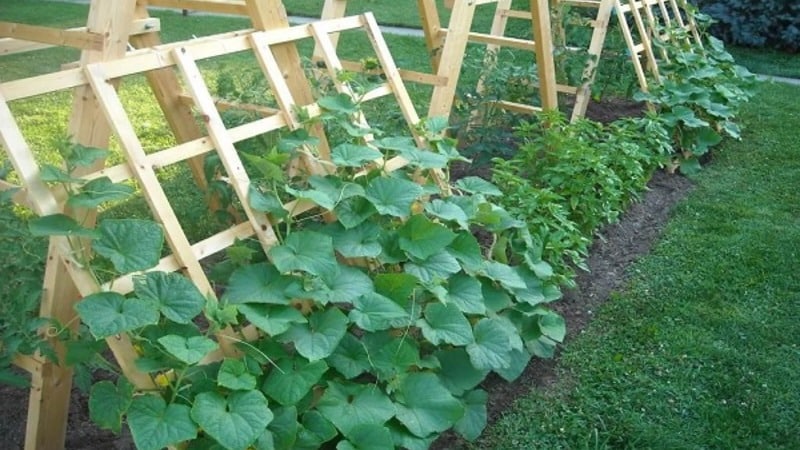
Diseases and pests
The hybrid is immune to diseases, dangerous for the pumpkin family. These include: powdery mildew, tobacco mosaic virus, cladosporiosis and root rot. Carrying out preventive measures and following the rules of crop rotation will further strengthen the crop’s immunity and ensure maximum yield.
Carrying out prevention does not imply any specific actions. It is enough to control the level of humidity in the beds and maintain the temperature in the greenhouse (22-25°C). When these indicators increase, there is a risk of developing fungal infections.
A pest that can cause serious damage to plantings is the whitefly. This is a butterfly that not only lives on unprotected ground, but also penetrates closed structures. The drug "Aktara" or a soap solution will help get rid of the pest. It is prepared from one piece of laundry soap dissolved in a bucket of warm water, and not only the stems, but also the leaves of the plants are treated.
According to the rules of crop rotation, if crops of the pumpkin family are planted next to cucumbers, preventive measures are also applied to them. Otherwise, if any plant gets sick, the cucumbers will also get sick.
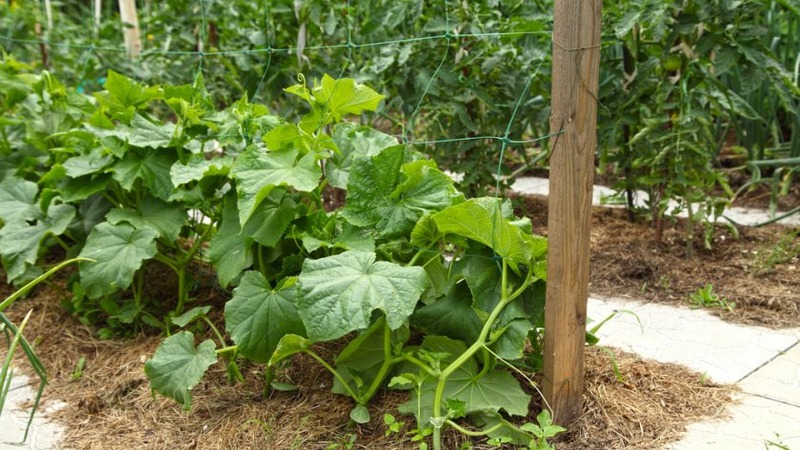
Harvesting and application
It is convenient to collect ripe fruits, since they ripen simultaneously on one bush. Ripe vegetables are the same in size and have an attractive presentation. Fruiting is extended, so fresh cucumbers are guaranteed until frost. Fruits, as a rule, do not outgrow - when they reach 15 cm, they stop growing.
The use of cucumbers is universal. They perfectly decorate and complement the taste of any fresh dish and are suitable for making pickles and marinades.
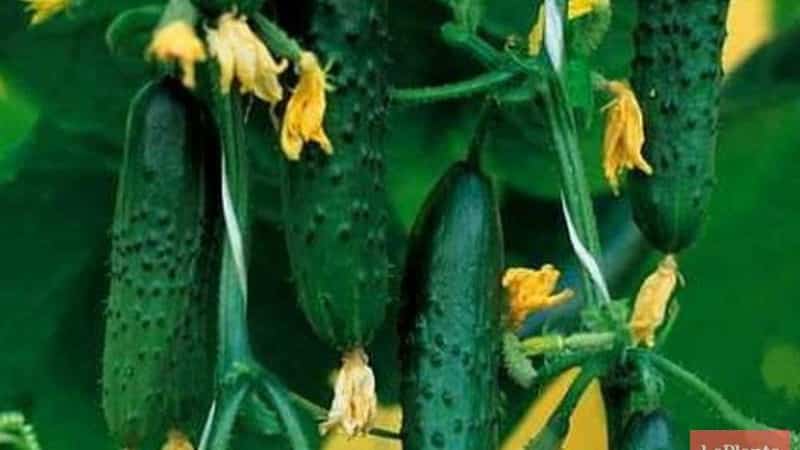
Advantages and disadvantages of the Real Colonel
Let's start this section with the advantages. It must be said that hybrid crops compare favorably with pure varieties, since breeders, when creating the next hybrid, take only the strongest aspects from the parent varieties. That is why hybrids tolerate temperature changes more easily and quickly adapt to unfavorable conditions.
Now let’s look at the advantages characteristic of a Real Colonel:
- the possibility of propagation in two ways: seedlings and non-seedlings;
- strong immunity to dangerous diseases;
- high yield;
- unpretentious care;
- friendly ripening of fruits;
- extended fruiting;
- excellent taste;
- marketable condition;
- versatility in cooking.
The negative aspects include:
- voids inside fruits during development in unfavorable conditions;
- impossibility of independently collecting seeds.
Reviews about the hybrid

In the photo we see powerful bushes with beautiful fruits. What do farmers and those who like to spend the summer in their summer cottages say about the hybrid? Here are some reviews from those who planted it in their beds.
Elena, Kazan: «I tried many varieties, but the Real Colonel cucumber hybrid is my favorite. Caring for cucumbers is not difficult, and the results are always pleasing.I use the harvest both fresh and for winter preparations. It seems to me that the taste in pickles is in no way inferior to fresh cucumbers. I am happy to advise everyone to plant the crop, believe me, you won’t regret it!”
Dmitry, Moscow region: “I can say with confidence that the hybrid is reliable, the yield is stable, fruiting is long, and there will be enough fruit for both summer and winter. The only difficulty is to install a trellis so that the plants do not spread along the ground. Otherwise, I don’t see any obstacles to the Colonel’s landing.”
Conclusion
Hybrid The real colonel f1 courageously conquered many summer cottages and vegetable gardens. Its main merit is its high yield (10–13 kg per 1 sq. m) with simple agricultural technology. Additional advantages are stable immunity to many diseases, excellent taste and universal use.
Incomparable variety! I've been planting for three years. Productive, good both fresh and canned. Cucumbers are long, thin (if removed in time), crispy when pickled or pickled!
I love this variety!!! Several years with him! Beautiful, tasty, reliable!!! I recommend!)